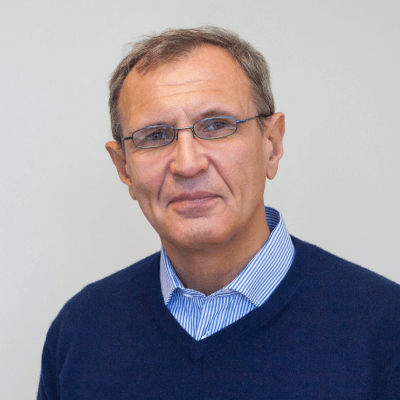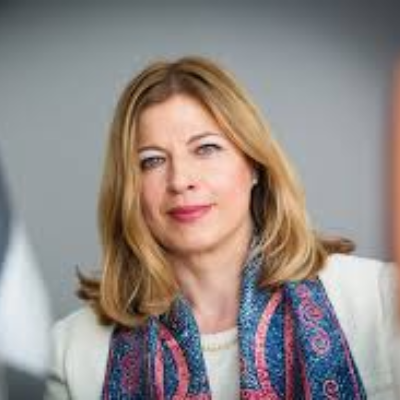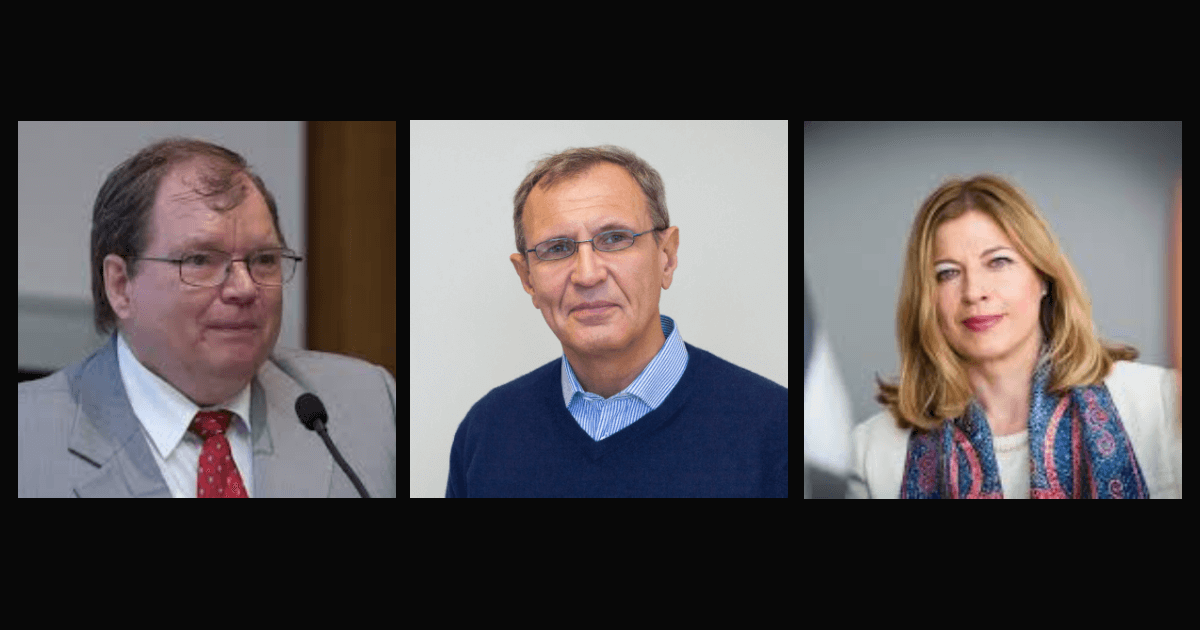Possible Synergies for India Estonia cooperation in the field of Biotech
Contributors: Prof. Andres Metspalu – President of the Estonian Human Genetics Society, Dr. Jaanus Pikani – Chairman of the Tartu Biotechnology Park in Estonia, H.E. Katrin Kivi – Ambassador of the Republic of Estonia to India: interviewed by Sachin Gaur – Executive Editor, InnoHEALTH Magazine

Prof. Andres Metspalu is the President of the Estonian Human Genetics Society and a member of the Steering Committee of the Genomics Center of Excellence, as well as the Human Genetics Society Steering Committee of the Human Genome Organization, American Human Genetics Society, and ScanBalt Academy. He was the Founder and Chairman of Asper Biotech Ltd. in Tartu. In 2017, he was awarded the Baltic Assembly Prize for Science in recognition of “his innovative, diverse and lasting contribution to gene technology and molecular diagnostic”.

Dr. Jaanus Pikani is the Chairman of the Tartu Biotechnology Park and board member of a number of life science and health care companies. He is also the Chairman of ScanBalt, a biotech meta-cluster organization in ScanBalt BioRegion, composed of the health and bio-economy communities in Denmark, Estonia, Finland, Iceland, Latvia, Lithuania, Norway, Poland, Sweden, Northern Germany, Northern Netherlands and North-Western Russia with more than 60 universities and over 3000 companies active in the region.

H. E. Katrin Kivi is the Ambassador of the Republic of Estonia to India & concurrently accredited to Singapore, Bangladesh, Malaysia, Nepal and Sri Lanka. She also served as the Estonian Permanent Representative to the Council of Europe in Strasbourg, Ambassador of Estonia to Denmark and worked with the Estonian Ministry for Foreign Affairs. She also served as Director for Asia, ASEM and ASEAN, Deputy Head of Mission in the Estonian Embassy in France, Deputy Permanent Representative of Estonia to UNESCO in Paris and Director for EU General Affairs in Tallinn.
When we got independent as a country we wanted to modernize our health system starting with digitization of records. So, Estonia was ready for change and hence we could have early start in various spheres including genetics and bio banking.
Share with us the Estonian progress in the context of Biotech and your journey. If an overview of Biotech research could be shared for our readers.
Andres Metspalu (AM)
I started with medicine and then eventually genetics and now I am in personalized medicine. I was lucky to have a good exposure early on participating in various international research programs. When we got independent as a country we wanted to modernize our health system starting with digitization of records. So, Estonia was ready for change and hence we could have early start in various spheres including genetics and bio banking.
Katrin Kivi (KK) Biotech is doing well in Estonia (like many other ICT related sectors) since our government was wise enough to regulate and protect the achievements in science and technology by a solid legal framework, including data privacy. Thus, the overall system is functioning well, there is quite a remarkable public trust which was essential precondition for collection of private data, i.e. people are not scared about any abuse or criminal leakage.
Biotechnology plays an important role in Estonia’s innovation strategy and, with investments into infrastructure already made, the industry is warmly welcoming cooperation with foreign organizations. Estonia’s main areas of biotechnology competence are genomics, immunology, the central nervous system and cancer research. The Estonian Genome Centre was founded according to Human Genes Research Act in 2001 specifically to study the following:
1. promote the development of genetic research;
2. collect information on the health of the Estonian population and genetic information concerning the Estonian population;
3. use the results of genetic research to improve public health.
Biotechnology-related legislation in Estonia is well-established and harmonized with EU legislation. The importance of progress in this sector is also recognized by the government as one of the strategic key technologies.
Tartu Biotechnology Park was established in December 2001. Tartu Biotechnology Park provides excellent physical infrastructure as well as business development and consultancy services to companies and R&D institutions in the fields of biotechnology, medicine and veterinary medicine. It supports companies in finding cooperation partners and is active in the establishment process of new companies.
Estonia has identified biotechnology as a research priority. To help close the gap between the academic research environment and industry, the government has, with the help of EU and industry funding, established a series of Competence Centres, which are intended to move innovations along the pathway towards commercialization. Eight have been set up so far, of which four are in life sciences.
Tallinn has centres involved in cancer research and in food and fermentation technology, while Tartu is home to centres doing research on reproductive medicine and biology, and on the intersection between dairy products and health.
The Competence Centre on Health Technologies (CCHT) is a biotechnology company focused on research and product development in personal medicine, drug development and both human and veterinary reproductive medicine. It works closely with leading Estonian scientists, universities and biotechnology companies as well as scientific, medical and R&D institutions from Europe, Asia and America.
Biotechnology Competence Centre (BioCC) carries out internationally recognized R&D to create, develop and implement innovative biotechnological solutions for feed, food supplements, integrating its and international knowledge in the field of microbiology, biochemistry, genetics, food technology, metabolomics, genomics, physiology, and medicine.
Center of Food and Fermentation Technologies (CFFT) is an R&D company based on extensive use of modern analytical methods, systems biology and synthetic biology principles, aiming at development and introduction of innovative food and fermentation technologies. Biotechnology and food technologybased R&D are very closely related in CFFT via the use of so–called ‘omics’ methods and in-depth knowledge and understanding of molecules and their behavior.
What were the reasons that Estonia became a pioneer in large scale population genome mapping? What was the role of government in this enablement?
AM: It was a lucky situation that CEO of the Tartu University Hospital (Dr. Jaanus Pikani) was a forward-looking person and being MD understood the potential of the genomics in future health care already 20 years ago. Prof. Andres Metspalu, MD himself, was the director of the Molecular Diagnostic Center at the Tartu University Hospital and professor of biotechnology at the Tartu University. We proposed the biobank idea to the Estonian government in 1999 and after long public discussions the idea was accepted. Next, the Human Gene Research Act was adopted by the Riigikogu (the Estonian parliament) and with the help of initial seed money from the government we able to raise 4.5M USD private investment (mostly from USA) to start the Estonian Biobank as a PPP endeavor. Since 2006 the Biobank was transferred under custody of Tartu University and has been financed mainly from public sources (Estonian and EU). Today we have 200,000 people (20% of adult population) in the EstBB and government is continuing supporting us.
The role of bio banking is well understood now but could you still highlight key benefits for our readers.
AM: The key benefit is prevention as genetic profiling gives us risk scores in advance and we can make the population aware of the risks they have in time. Recent investigations on cost benefit analysis even on a single condition like diabetes, show a viable return on biobanking. We can also do personalized medicine and hence pharma companies are also interested in collaborating with bio banks.
Jaanus Pikani (JP)
Biobanks can be valuable basis to introduce novel personalized medicine tools to everyday practical healthcare. Determining polygenic or familial diseases susceptibility risks will help for prevention and early detection of number of diseases. We are about to finalize a pilot project on breast cancer and cardiovascular disease screening based on genetic markers on Estonian Biobank participants and their close relatives, and we are looking in to introduce the genetic population stratification into everyday medical practice soon. The next steps to this direction will be to widen the list of diseases and to implement PGx digital support system to assist doctors while prescribing medicines to their patients. All these measures will help the healthcare providers to increase efficiency and and improve treatment outcomes.
How do you react to the Indian Finance minister’s budget speech talking about genome mapping? Any lessons from Estonia that can be extended to Indian context?
AM: Genomics is the basis of the personal health care – rare disease, cancer, common/complex disease and pharmacogenomics all are based largely on the DNA data. Health care costs are high and shift from the treatment towards prediction and prevention saves money and lives.
JP: Similar to India, Estonia didn’t have same amount of funds available and still cannot be compared with more wealthy nations like UK or USA, when starting to develop the Biobank. Therefore, for practical reasons it is of utmost importance to find most optimal strategy and design for the project. In the Estonian model we can underline two elements among others that have paved the way to success: (1) optimal balance between using deep sequencing for population genetic profiling and genotyping for large scale genetic population mapping to reach maximum practical outcome with optimal costs, and (2) seeking innovative models of financing and cooperation incl. partnerships with private sector investors and research institutions to speed up the process.
We believe that you have a cooperation agreement with DBT in India on the topic of biotech. Are you exploring any synergies on that basis already?
Tartu Biotechnology Park (TBP) has close cooperation with InnoHealth to facilitate synergies between Indian and Estonian companies and research groups. The Chairman of TBP Dr. Jaanus Pikani has been invited to join the Advisory Committee of Research and Innovation Circle of Hyderabad (RICH), which is aimed to speed up the success of startups in Health, Food & Agri, and Defence and Aerospace. We hope to reach to first real cooperation projects in the near future. The announced genome mapping project by the Indian Finance minister could be a good area to work on.
Please share your expert opinion on the Indian plan as announced by our finance minister in the budget speech.
AM: I would like to propose the following, the different study design: sequence deeply (30x) 10,000 individuals, population based, not selected by disease, but by geographical area so that you can capture the maximum genetic variation of India (or a region). Instead of sequencing 10,000 patients use the same amount of money for genotyping with high density arrays (Illumine GSA or Thermo Fisher PMDA, PMDA Plus and PMRA).
Arrays are around 20-25 USD and you can analyse 20 x more people (~ 200,000). Using the WGS impute arrays into full sequence and you can get minor allele frequency (MAF) around 0.1%. This is good enough for association studies (GWAS), personal medicine (polygenic risk scores or drug response in phramocogenetics (PGx).
Can you share your ideas on possible India Estonia cooperation leveraging the strengths of both regions.
AM: We have very close collaboration with India on the topic of population genetics. My son, Dr. Mait Metspalu, who is the director of the Institute of Genomics at University of Tartu did his PhD on Indian populations (“Through the course of prehostory in India: tracing the mtDNA trail.”) and institute has many scientists from India. We could work together on personalized medicine, like I described above.

